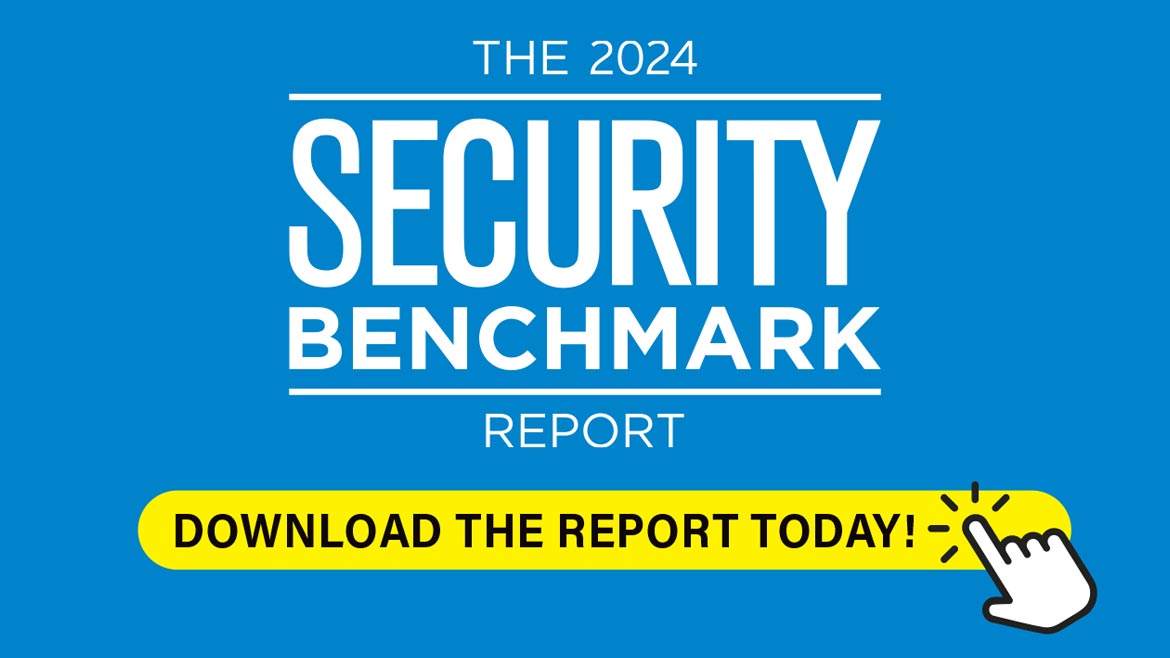The 2024 Security Benchmark Report
November 6, 2024
The 2024 Security Benchmark Report
November 6, 2024Cover image / Boy Wirat / iStock / Getty Images Plus / via Getty Images
Security magazine is excited to present The 2024 Security Benchmark Report, an editorial initiative that collects self-reported data from enterprise security programs across the globe and a wide range of market sectors to determine trends in security roles, responsibilities, technology, training and budget.
Our goal with The Security Benchmark Report is to provide a comparison of enterprise security programs across the security field and within market sectors. Each year we release the report, we aim to build a wider picture of how enterprise security programs change, grow and mature year-over-year.
The 2024 Security Benchmark Report is comprised of:
- Main Report, which includes data across all respondents and sectors they represent.
- Sector Reports, which include data broken down by sector.
- Leader Profiles, which provide an inside look into two enterprise security programs and their accomplishments in the past year.
Register for free to download the complete report and get unlimited access to SecurityMagazine.com. Already a Registered User? Sign in now.
The Security Benchmark Report is an editorial initiative that collects and reports on self-reported data from security leaders who are responsible, at least in part, for physical security in their organization.
While The Security Benchmark Report aims to offer security programs insights into what their peers are doing, we understand that the metrics important to one program may be completely different than another program.
Therefore, the biggest benefit to filling out The Security Benchmark Report survey is that each security executive respondent receives the raw, anonymized data from the survey to compare and contrast across the industry or specifically companies within their sector based on any metric they wish.
This year, we asked respondents to report on the roles, responsibilities and function of their security programs; the type and cost of security training they implemented last year; increases and decreases in their security budgets; metrics they and their leadership find most valuable; and more.
Looking for a reprint of this article?
From high-res PDFs to custom plaques, order your copy today!
For even more insights, fill out The Security Benchmark Survey next year to receive the raw, anonymized data. The survey will be open from February to mid-July 2025. And don’t forget to join us for a special webinar presentation on The 2024 Security Benchmark Report on November 7, where we discuss the report in-depth and reveal statistics exclusive to the webinar.
Read on for the insights unearthed by The 2024 Security Benchmark Report!

MAIN REPORT
We asked respondents to report on the roles, responsibilities and function of their security programs; the type and cost of security training they implemented last year; increases and decreases in their security budgets; metrics they and their leadership find most valuable; and more.
Security Roles & Responsibilities | Security Budgets, Spending & More | Security Guarding & Operations | Security-Related Training & Technology | Security Teams Using Metrics

SECTOR REPORTS
Data from The Security Benchmark Report survey is broken down by sector in an effort to provide security programs with a meaningful comparison among programs in similar market sectors.
For The Security Benchmark Sector Reports, you’ll see data regarding security’s roles, responsibilities and budgets broken down by sector. In certain cases, sectors were combined to create a larger dataset. If a sector didn’t lend itself to combining and the dataset was too small, then that sector was excluded from having its own sector report page, but is included in the main report for all other calculations and comparisons.
Aerospace, Pharma & Biotech | Agriculture, Food & Beverage, Retail | Banking & Insurance | Business Service & Consulting | Education | Government | Healthcare | Hospitality, Construction, NGOs | Information Technology & Media | Manufacturing | Utilities & Distribution
LEADER PROFILES
Benchmark Leader Profiles provide an inside look into two enterprise security programs and their accomplishments in the past year.

Archer Daniels Midland Co.
Security and Business Continuity

State Street Corporation
Ensuring Security and Service for Over 200 Years












